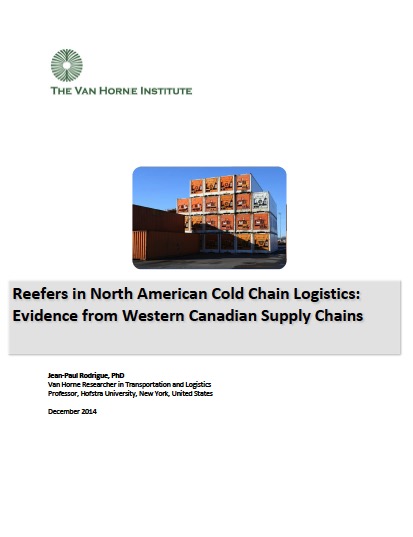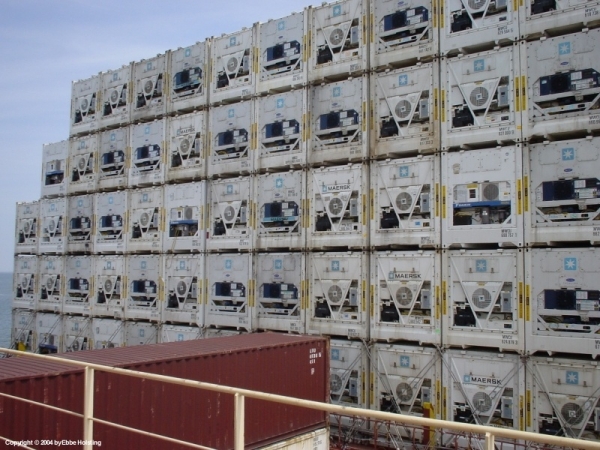 An analysis of the use of refrigerated ISO maritime containers (reefers) in cold chain logistics, is the theme of the last port study of PortEconomics member Jean-Paul Rodrigue.The study titled ‘Reefers in North American Cold Chain Logistics: Evidence from Western Canadian Supply Chains’ and published by Van Horne Institute.
An analysis of the use of refrigerated ISO maritime containers (reefers) in cold chain logistics, is the theme of the last port study of PortEconomics member Jean-Paul Rodrigue.The study titled ‘Reefers in North American Cold Chain Logistics: Evidence from Western Canadian Supply Chains’ and published by Van Horne Institute.
Reefers are used in a wide array of cold chain trade relations but mostly involve large exporters and importers, but due to their size are also accessible to small and medium sized traders can also access the flow of reefers with relative ease.
North American reefer cold chains have two distinct logistics, one which is import-based and the other export-based. The dynamics of the majority of the import reefer trade is consumption related, which involves distribution to large consumer markets. They are determined by the North American population density; the largest metropolitan areas are the largest markets. The dynamics of export-based cold chain logistics is completely different than the import sector in terms of origins, destinations and economic sectors. While weight-wise, exports are twice as voluminous as imports; exports comprise a lesser range of products. Meat and poultry products dominate reefer exports.
The report can be freely downloaded from the Van Horne Institute website.












